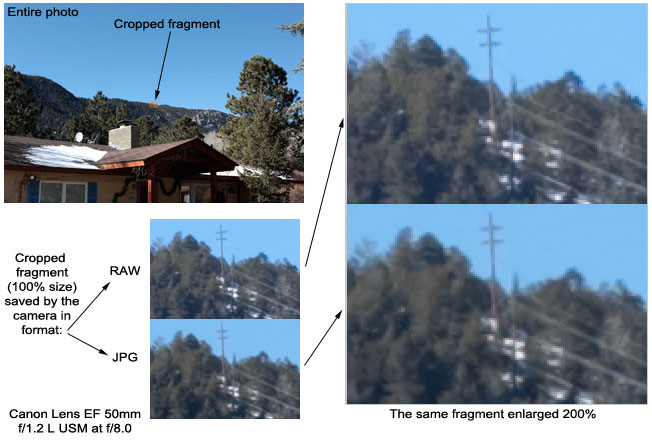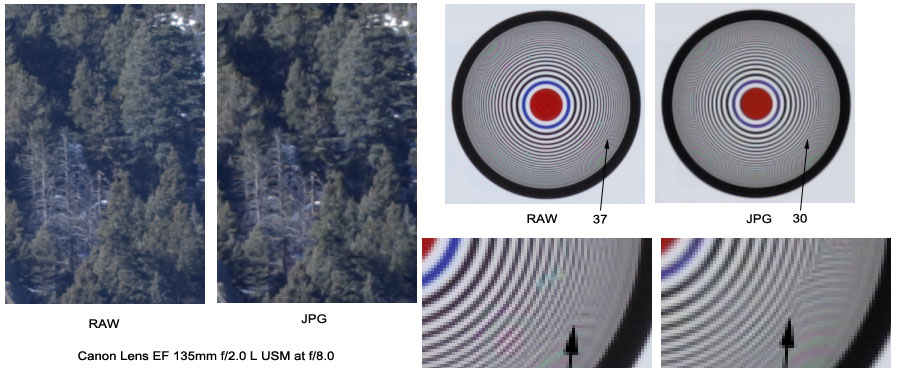
Besides making picture of a forest, I made the picture of the circular chart. Enlarged small fragments of the charts are shown in bottom right of the next figure.

The most visible difference is in the forest image. RAW saved it with multitude of fine shades while JPG image show the trees more like a unsharp blob, with clearly less details (best visible on the enlargement of the top figure). In the circle chart photo I could read a line corresponding to a 37 hundred LW/PH from the RAW image (the last white line well visible), and only 30 from the JPG image (see the arrow pointing to the black line). Additional Moire lines were created by jpg-saving algorithm, see the area to the right of the arrow on the enlargement (I suppose the Canon staff intention was just opposite). That represents 19% reduction in resolution. If I set the camera on a 21M pix format I expect it to acquire true 21M pix image, and not 14M pix! I tried to contact Canon technical support, but they did not return my e-mail regarding this issue. Canon 5D mk. II makes pictures also in smaller formats. The next step down is to make either 4080 x 2720 JPG (11.1M) or 3861x2574 RAW (9.9M; I wonder why not the same sizes), and in these modes as well as in the small format modes this JPG-RAW resolution discrepancy does not exist (not shown here). As you can see, the photo above is presented in the JPG format (saved by Photoshop "for web" on quality 60). Adobe Photoshop software does not ruin quality of RAW files when saved in high quality JPG formats. Similar reduction of resolution I have observed with a 17 M pixel Canon 1Ds Mark II.
Conclusion: If you need the highest quality pictures, use the large RAW format. Previously I had an impression that RAW files preserve only more color information (8 bit vs. 14 bit), making higher dynamic range images, but it never occured to me that I was also compromising on sharpness when saving JPGs. This is just a matter of JPG-saving algorithm, so I hope that Japanese engineers will fix this problem. Canon's method of saving jpg files inside your camera is significantly more destructive that saving jpg files under the Photoshop software. It purposely blurs fine lines, supposedly to reduce Moire effect, however, besides softening the image the Moire effect is even more pronounced.
© 2009 PikesPeakPhoto. All rights reserved.